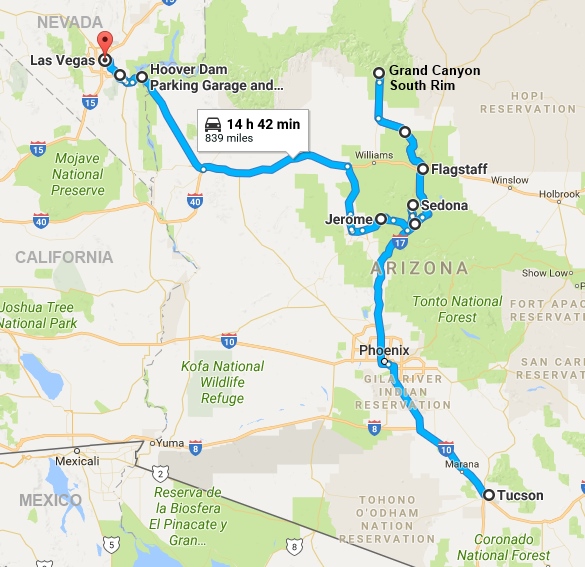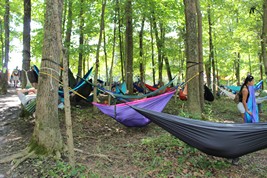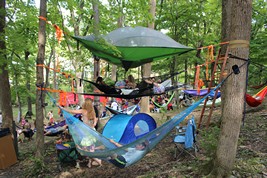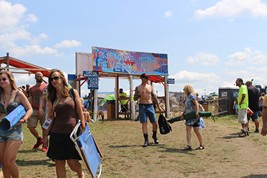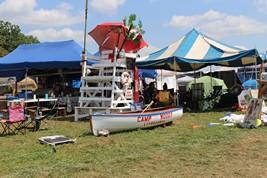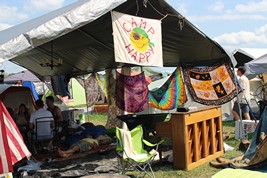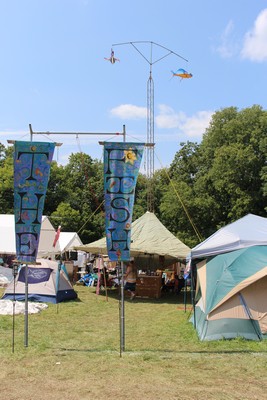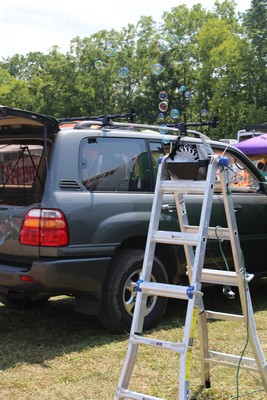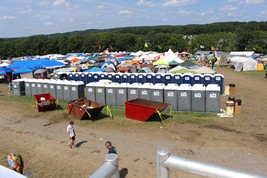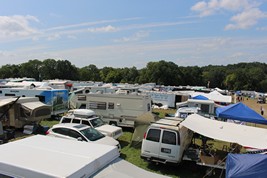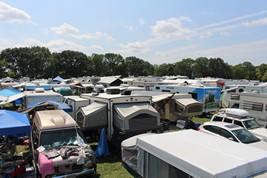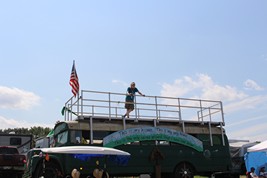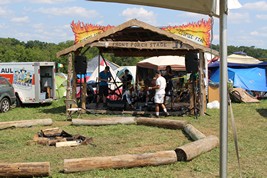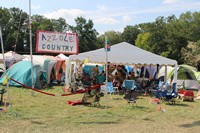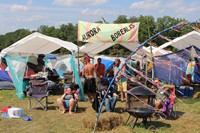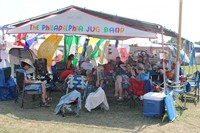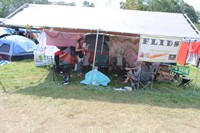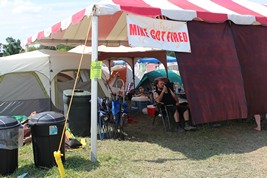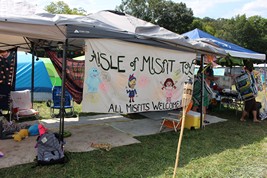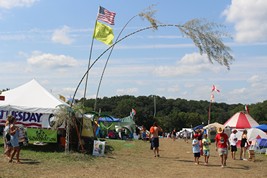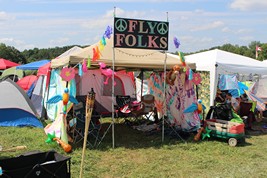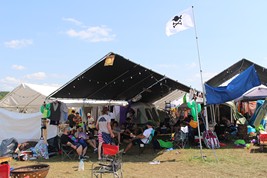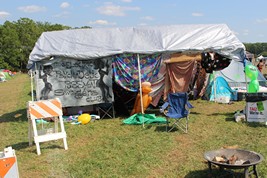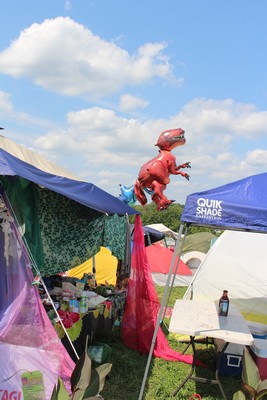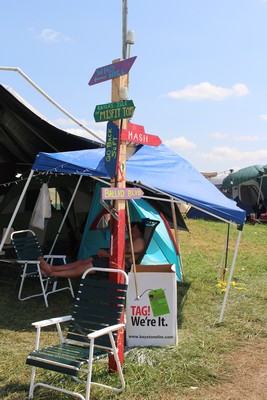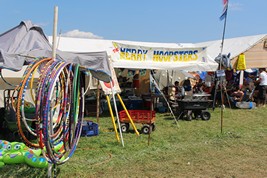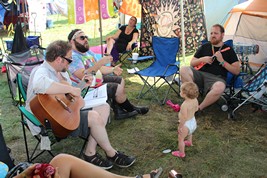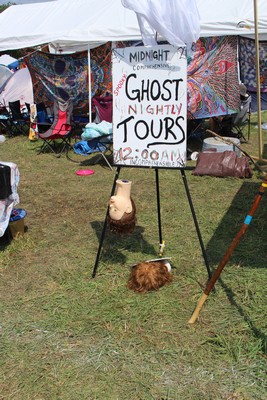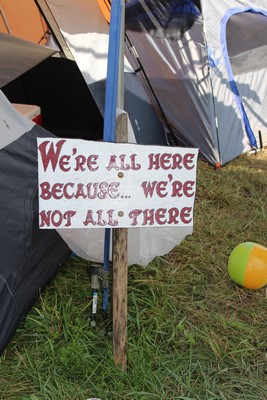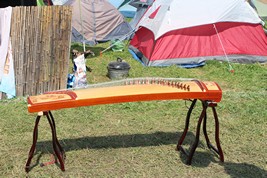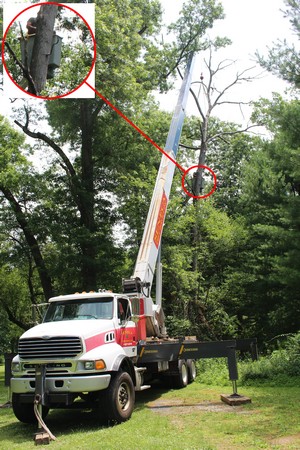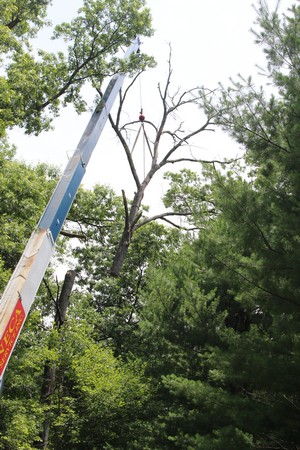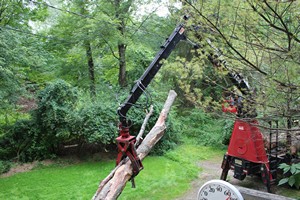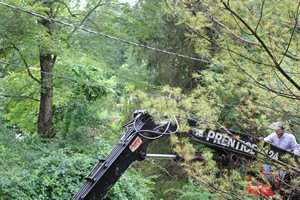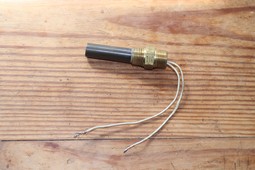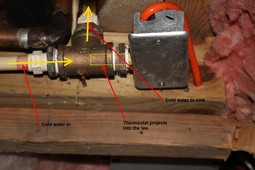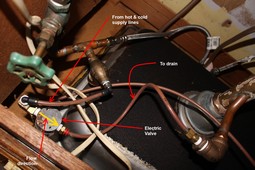December 4, 2017
Roy Moore
Much fuss has been made recently over Judge Roy Moore’s alleged associations with young, and perhaps under-age girls several decades ago. While such associations might be ill-advised at best, and despicable at worst, the whole subject has served to mask an aspect of Judge Moore’s character that has the potential to damage one of the basic tenets of American democracy.
Judge Moore openly and avowedly supports a system of government based upon the teachings of the Bible. He has held up the Ten Commandments as the principals upon which United States law shall be based.
In other words, he is proposing a Christian version of Sharia Law.
I’m sorry, Judge Moore. I am a good man. I am a highly moral man. But, like many other teachings in your Bible, I choose NOT to observe its very First Commandment*. And the very First Amendment to the Constitution of my country tells me I don’t have to. And the Supreme Court of my country agrees with that.
You would have every Jew, every Muslim, every Buddhist, every Sikh, and every atheist in this country conform to your Bible. A book that is so full of contradictions, ambiguities, obsolescences, and conflicting interpretations, that it can be manipulated to support slavery, subjugation of women, capital punishment for inappropriate offences, ethnic cleansing, homophobia, and other practices that, despite its best intentions, are completely at odds to current day thinking, and to my own.
Judge Moore, your whole basis of what you think is right and wrong has no business in any aspect of this country’s government, whether in the Senate or on the Bench.
* “I am the Lord your God, who brought you out of the land of Egypt, out of the house of bondage. You shall have no other gods before Me."
November 2, 2017
Tomas' Pumpkins
Tomas' Pumpkins, 2017
Click on any image for a full-screen version.
All of these carved pumpkins are works of Tomas Gonzales of Washington, New Jersey.
This is an ongoing multi-year collection.
Designs for these pumpkins are Registered Copyright ©T.Gonzales
Tomas may be reached at: gonzales.tomas1@gmail.com
To see photos of other years' displays, click here.
I have a friend, Tomas Gonzales, who, since 1994, has become a local legend in Washington, NJ for putting on a display of the most astonishing jack-o'-lanterns every Halloween. These are museum-quality sculptures with a very short shelf life. He sets them out on the railings of a tiny one-lane bridge across a stream bordering his property. The setting of the display on the tranquil bridge over the babbling stream, illuminated by the full moon enhances the beauty and magic of the carvings themselves. And for the week or so after Halloween, the display attracts visitors of all ages. This public display of artwork has earned him a place in the Warren County Hall of fame.
I met Tomas peripherally as the brother-in-law of my friend Peter Fischman. He is a graphic artist by training and inclination, and has illustrated everything from scientific articles to children's books. He also is the creator of one of the inlays (The lunar surface) on the neck of my custom Martin D-28 guitar.
Tomas creates the remarkable effect of shading by selectively shaving the rind of the pumpkin to varying thickness, allowing more or less light from the candle inside to come through. But the technique, while clever, would mean little without the artistry involved in the concept, creation, and rendering of his works. Sometimes the shape of the particular pumpkin he's carving will dictate the subject of the work. For instance, note how the very regular egg shape of the Baby Dragon pumpkin dictates the way it is depicted emerging from its egg. There is a wonderful trick he often uses illustrated here in the King Of The Dead. The pupils of the eyes are cut through the rear of the gourd, so that they appear black when seen through the eye holes in the front. And then the parallax seems to make the eyes follow the viewer as one walks past the carving.
These are were not easy photographs to take. And while I have a pretty good single lens reflex camera, I have been using it on the "auto" setting (What my mother used to call "PHD" mode; "Push Here, Dummy!") up until now. This is my first foray into manual mode and its mysteries. My thanks to Bill Henderson for the use of his tripod, and to Unique Photo in Fairfield NJ for some basic instruction in technique.
August 31 - September 14, 2017
Southwest Vacation
About a year ago, my good friends Andrew and Barbara Hines abandoned their Boonton NJ digs, and moved out to Tucson, AZ. They had been raving ever since about the climate, the community, and their new house, and have been inviting everyone to come out and visit. After a few months, missing the NJ folk scene, they started hosting house concerts, and offered me one if I ever came out their way. Of course, to fly out to Arizona to do a house concert and back made no practical sense. But the thought occurred to me that I've been going abroad on vacation the last few years. Why not spend some vacation bucks right here in the US, and maybe make a few of those bucks back with a house concert in the process? The Grand Canyon is within reach of Tucson. I haven't been there since I was 4 years old, and the only thing I remember about that trip is that I slammed the car door on my finger there. So, I called up Jenny, compared schedules, and decided to spend the first two weeks in September in the sunny Southwest. Click on the map to enter the Travelogue.
NOTE: THIS TRAVELOGUE IS BEST VIEWED ON A FULL SIZED COMPUTER MONITOR, RATHER THAN ON A TABLET OR PHONE.
August 19, 2017
The Philadelphia Folk Festival Campground
The Philadelphia Folk Festival, founded in 1962, is one of the oldest, largest, and most prestigious folk festivals in the United States. The number of attendees is somewhere in the five-digit range, and nationally known acts populate the stage for the evening concerts. I’ve been associated with it since 1980, when my friend Danny Ruvin, who was one of the songleaders at the campground Fire Circles invited me to attend as his “kin”. That entailed free admission to the Festival and free meals in the "Alfred G. Packer* Memorial Dining Hall", where the volunteers are fed.
The following year, I was hired as a fellow campfire songleader to Danny, and served in that position for about 15 years. And I’ve attended the Festival almost every year since, occasionally as a performer, and in other years as a guest of the Festival.
I’ve come to be part of the unique culture of the Festival, which is hard to explain or define. It’s really something that can only be experienced, not described. It's sort of like becoming a member of a tribe. There are aspects of the hippy culture of the 60s that are retained to this day. And nowhere is that culture stronger than in the Campground. There are maybe 4 to 5 thousand who camp, many of whom have been doing so for decades, grouped together in little enclaves, which have been staking out the same territory on the grounds every year, and erecting signs, markers, and artifacts to claim and identify that territory. Some of these constructs have become impressively elaborate over the years, which is all the more impressive in that they have to be carted in, erected, and then disassembled at the end of the weekend. There are some stalwarts that spend the entire weekend in the campground, and never make it out to the Festival grounds. It's a place for renewing old friendships, playing music, hanging out, partying, and yes, indulging in some artificial stimulation. It's a people-watcher's paradise. In 2004, I had the opportunity to emcee the main stage at Philly. And between acts I delivered a monologue about an incident that occurred in the campground wherein I found myself the reluctant hero of the tale.
Last year, while roaming the campground, I took a number of photos with my phone, which I posted in this Blog. It was sort of a spur of the moment thing. So I resolved to do a better job this year with a good camera, and devoting a bit more time and forethought to the endeavor. Even so, taking photos during the day cannot do justice to the true spirit of the Campground, which truly comes to life after the end of the evening concert, and goes on strong into the wee hours. Many of the campsites are ablaze with various light shows. But neither my words, nor my camera, nor my photographic skills can really do it justice in the dark of night. So enjoy these midday shots. Click on any image to see it full screen.
* Alfred G. Packer was one of the members of the ill fated Donner Party that tried to cross the Rocky Mountains in the winter of 1874. Most starved to death, and the rest survived only by eating the remains of their dead companions.
Dulcimer Grove
You enter the campground by going through Dulcimer Grove, the only shady place on the grounds. All through the day, this is the site for juggling, New Vaudeville, circus arts, and kids’ activities. This being the only place with shade, folks have taken to stringing hammocks between all the trees in the grove. Some of the hammocks can get pretty elaborate (Photo 4).
Upon entering the campground
After showing your camping wristlet to the cheerful volunteers at the gate, the first campsites you encounter are Camp Woody (Photo 6) and Camp Happy (Photo 7), two perfect examples of the extent to which some groups will go. Camp Woody's lifeguard tower and lifeboat had to be carted in and erected, and someone had to unload Camp Happy's piano from the truck. And they'll all have to be disassembled and re-packed at the end of the weekend. This is not a backpacker's campground.
Various and sundry sights
The elaborate iconery of some of the campsites boggles the mind! Note the 40 foot tall flying fish mobile at The Fish's site (Photo 8). And some just make you smile like the automated bubble machine in Photo 9 and the oversize block balancing game (Take turns removing a block from the middle of the stack and replacing it on the top until the thing falls over) in Photo 10. (How that kid can even reach the top is a mystery.)
Classic features of the Campground
In the early days, the Porta-Potties (Photo 11) used to be things of unspeakable horror. The stuff of nightmares and legend, to be told to the children in whispers on Halloween night. These days, they are almost civilized. They are plentiful and serviced regularly and often. My only complaint is that the magazine racks are always wet for some reason. They are also occasionally used as a giant xylophone by late night revelers, much to the dismay of anyone using them for their intended purpose at the time.
The so-called Heavy Camping area (Photos 12 & 13) is for people who sleep in their vehicles. These people must be all lined up and loaded in before any of the tenters have access, and they are the last to leave. The vehicles range from plain old SUVs with the rear seats folded to accommodate sleeping bags to fancy RVs with all the comforts of home to things like the school bus shown in Photo 14 below, from whose roof I took Photos 12 and 13. In the past for many years, there was also the"Duck", a World War II US Marine amphibious landing craft sporting agricultural license plates that made it to the festival on a regular basis.
Photo 14: I'm guessing that the observation platform was probably erected on the bus' roof after it was parked in place.
Photo 15: Front Porch Stage: There's a history here. When I first started doing songleading in the Campgrounds in the early 80s, it was situated around the fire pit shown in the foreground. People sat on the logs, and stood around the periphery, and the songs were sung mostly by the people gathered round the fire. My job was to sort of organize it, setting up the order, and having people be ready when their turn came, and I'd take my turn leading a song when it came around. Then it got so popular that they set up a second fire circle elsewhere in the campground so the singers would get to lead a song more than once every 90 minutes or so. In the other circle, they brought a little battery-powered amplifier and a microphone, and the singers came up to the mic to sing. Ever the purist, I felt that amplification seemed out of place at a campfire. It turned what started out as communal singing into a performance. So I continued my circle unamplified. Evidently the high-tech faction won out. Because after I stopped being a songleader, they reverted to a single site, but built a stage with lights and a sound system for the singers. I guess "performance" was what they were looking for. The campfire itself seems almost an afterthought these days, as all attention is drawn off to the side at the stage. Ah well. Tempus fugits along.
Photo 16: Not all campers are in the big enclaves. Here's a collection of folks who set up their own tents where they could find some space.
Legacy Campsites
These campsites have been in their current locations in the campsite every year since the Boer War. The Azzoles are noted for spirited bluegrass jams late into the night. And the Philadelphia Jug Band's music is eponymous. (Look it up.) And I'm personally less familiar with the Flids and Aurora Borealis, so I can't comment on their particulars..
More campsites
|
||
|
More stuff
In case your GPS isn't working |
||
More things you'll find
Photo 30: The Merry Hoopsters are proof that the hula hoop is alive and twirling. They are out in force all night. and there are lots of extra hoops should you care to try it.
Photo 31: Ah, yes. The ubiquitous mud. There are some places you will not want to set up your tent.
Photo 32: Making music. That's what a lot of us are here for. This group has a new fan.
Signs
And there are some things for which there can be no explanation.
|
Photo 39. Actually, I suspect that the explanation for this one is that there might be a beer keg inside.
August 16, 2017
A Rare Example of Good Customer Service
Somehow, the gas tank on my lawn mower sprung a leak. So I pulled the tank off the mower (Real simple. 2 screws), found the hole, cleaned off the tank, and patched the hole with epoxy and a short length of fiberglass tape.
I thought I was home free, so I went to put the thing back together. And discovered that when I had disassembled it, I mislaid the throttle return spring that went between the carburetor, which is mounted on the tank, and the frame. A little extension spring about 1/8" diameter and an inch long that went between the carburetor bellcrank and the frame. GRRRRR!
It is a 8 or 10 year old Craftsman mower from Sears. I looked around and located the legend plate with the model number, serial number, and an 800 number for parts and service. We all know that story all too well. An arcane phone menu, followed by an interminable wait on hold while listening to bad music and advertisements, followed by someone with a Pakistani accent who has no useful information for you.
WRONG! I got a robo-receptionist that asked me how it could help me, and told me that I could speak to it like a person. I said I needed a part for a Craftsman lawn mower. It said, "I'll connect you with someone who can help you." Two rings and a voice with a standard American accent asked how he could help me. I said I had a Craftsman mower, part number so-and-so, and I needed the throttle return spring. About two minutes later, he said, "We have it in stock. How many do you need?" $5.35 and $6.50 shipping.
Think about all the hundreds of springs and brackets and piston rings and wheel bearings on all the thousands of lawn mowers and exercise treadmills and air conditioners and sewing machines that Sears has sold to the public over the past 10 years, and who knows how many more. And this guy was able to lay his hands on the precise item I needed in 2 minutes.
Man, that's the way Customer Service should work. Three cheers for Sears!
July 6, 2017
Tree Removal
You may have read in this Blog of the time when a tree on my property fell, ripped out the power lines to my house and the house next door, and did some minor damage to both houses. (See A Tree Falls in Boonton, November 6, 2016.) So, already sensitized to the damage that can be done by falling trees, my eye was caught by a dead tree two lots away from me. It appeared to be pretty sturdy, with no visible rot or damage, and it was leaning very slightly in a direction at right angles to the line between it and my house. But it was very distinctly dead, with bark peeling, and most of the twigs and small branches gone. I was surprised I had not noticed it before. Even if it posed no danger now, it would eventually. I resolved to do something about it.
It was just on the far side of the property line between my neighbor's house and the lot beyond, and appeared tall enough to be able to hit either house if it fell the wrong way. The lot beyond is town property. There had been a house on that lot, but that house had flooded many times, and was eventually abandoned. All the lots on my side of the street border the Rockaway River, which occasionally comes to visit us now and then. (I solved that problem years ago by raising the house, similarly to those on the Jersey Shore endangered by coastal flooding. So that eventuality has become a minor inconvenience instead of a disaster. (See High Water, Ho-Hum, May 4, 2014.) The house had been torn down, and the property has become a sort of communal parkland for our neighborhood with river access for swimming, boating, and picnicking. One of my neighbors with a riding mower keeps it trimmed.
So I called up the Town office, reported it as a potential danger, and asked if they could have it taken down. The Building Inspector showed up a couple of days later, took a look, and agreed with me. He showed up the following day with a tree landscaper who appraised the situation, and scheduled the removal. I made an independent deal with the landscaper for him to cut the wood into 16 inch lengths, and deliver it to my garage for firewood. I enjoy the sort of mindless task of splitting wood. It's good exercise, and there's a sense of accomplishment in watching the neat stacks of cordwood grow.
A week or so later, the landscaper arrived with a 4-man crew and an impressive collection of specialized equipment. There was a crane with a 150-foot extendable boom, and a "cherry picker", and a scary-looking chipper that looked like it could reduce a sequoia to sawdust in no time flat. Yes, these things are relatively common in the larger scheme of things, and not cutting-edge (if you'll forgive the expression) technology. But it was fascinating to watch them in operation. They would support the top of the tree with the crane, lift a man with a chain saw to an appropriate midpoint, saw through the trunk, and then lower the cut off section to the ground in an unobstructed location where it could be further dealt with. More chain saws lopped off the major limbs. The smaller stuff went through the chipper, while the rest was loaded onto a log-carrier with a hydraulic arm and claw built into that vehicle. They brought all the wood to the street and then down my driveway, and unloaded it with the claw in front of my driveway. Then with two guys on chain saws and two more carrying and rolling the rounds into my garage, they made short work of making short lengths of wood. That's probably a season's worth of heat for a yard and a half.
Tree Removal
(Click on any photo to view it in full screen.)
My thanks and a tip of my hat to the town government of Boonton Township. I reported a potential problem, and they took care of it within a couple of weeks, probably spending about half my year's property taxes to accomplish it. This is how government should work.
April 27, 2017
New Car
|
|
Not much difference. Only 10 years and 200,000+ miles between 'em. One visual difference: The new one has 5 lug screws per wheel as opposed to 4 on the old one. Oh, yes. Just spotted one more: The fuel filler cap is on the other side. I wonder how long it's going to take for me to get used to that.
Funny story: My plan was to sell the old one. I had found a potential buyer, and arranged to meet him at the Mini dealership. The idea was that I would show him the car, take a test drive, and then conclude the deal and drive home in the new one. He got in the car, put it in reverse to back out of the parking slot, and the car started forward. (Manual transmission) The buyer wasn't an experienced stick driver, so I got in the driver's seat to back the car out. It went forward. The shift linkage picked that critical moment to go south on me. Talk about timing! Needless to say, the deal fell through. Actually, I was glad it happened before I sold the car. I would not have wanted to stick (you'll forgive the expression) the buyer with a lemon.
I left the old car in the dealer's lot, and drove the new one home. The next day, I went back there with a friend, who helped me push the car out of the slot. He followed me as I limped to my mechanic's shop using only 3rd and 4th gear and a couple of thousand miles of my clutch lining. He'll look at it, and we'll decide if it's worth fixing. If not, I'll scrap it. If so, anybody wanna buy a used Mini Cooper? Good shape. New shift linkage.
March 23, 2017
When Good Organizations Behave Badly
Many of you are aware of ActBlue as a PAC supporting many left-leaning causes such as election of Democratic candidates, a Constitutional Amendment to overturn Citizens United, and other political actions which I generally support. They are, however, annoyingly persistent, flooding my inbox with as many as a dozen messages a day loaded with dire predictions and exhortations in ALL CAPS and a lot of exclamation marks!!!!
This has been mildly annoying, and for the most part I toss everything that comes from them in my Junk folder without reading it. But I just discovered that they are engaged in a practice that, while not illegal, is unethical at best and downright underhanded at worst. I did make one contribution to them about a year ago. But I just received an annual accounting statement from them, and discovered that the default setting when one makes a contribution is to make them recurring monthly. I missed that when I made that first contribution, and hadn't noticed in my credit card statements that they've been charging my card once a month. It was my own carelessness on both counts. Yes, one can change that default from "Recurring" to "One-Time" when one makes the initial contribution. But it's a pretty shady way to do business if you ask me. I wonder how many other inattentive people like me they have ripped off with that scheme.
SHAME ON YOU, ACTBLUE!!!!! In the pursuit of a good cause you have alienated me and how many other supporters of that cause. You give a good cause a bad name. You got my 300 bucks, and that's all you'll ever get from me.
I've instructed my server to bounce all their emails in future.
March 4, 2017
The Engineering Mindset
The back yard of my house borders on the Rockaway River. Except when the front yard borders on the Rockaway. Which will happen a few times a year. (See Blog Entry of March 11, 2011, God Willin' an' the Crick Don't Rise.) It's pretty much a non-event these days. I've taken a number of steps to mitigate any damage, the most important of which was to raise the house shortly after my first flood put 3 feet of water in the house six months after I moved in. The photos in that 2011 Blog entry give a good idea of the results of the house-raising. When I moved in, that masonry first storey did not exist; it was only a 16 inch crawlspace. There's nothing in that new lower storey but garage space. The boiler and other such utilities went up with the rest of the house. The floor of the garage is at ground level, so water doesn't collect in there. When the water level goes down, the water all drains out. The house raising has pretty much prevented any further flood damage, even when Hurricane Irene put about 7-1/2 feet of water in the garage.
However, one unexpected consequence of that house raising was that my water pipes became susceptible to freezing. When it was only a crawlspace, it was a much smaller volume of air, and enough heat from the house leaked into the crawlspace to keep it warm enough to prevent that. Once I raised the house and added insulation under the floor, that garage got cold when the outside temperature got into the single digits. And all the heat tape and insulating jackets I could put on the pipes wasn't enough to handle the really cold nights. And I couldn't use the tried and true solution of letting the water drip, because if I did, the drains, which also run down through that cold garage, would also eventually freeze up. And then I'd be in trouble. So I set my engineering mind to the problem.
How to approach the problem? I figured that if I could run the water at a reasonable rate when it started to get down towards 32°, and then shut it off again when the pipes filled with the warmer water from the tank, I could keep the pipes from freezing while still not clogging the drains with ice. The coldest spot in the water lines is right below the kitchen where the imperfect seal of the garage door allows outside air to get to the water pipes. And the kitchen sink was the end of the water line, so running the water in the kitchen would flush the entire line.
|
(Click photos for full screen view)
So right at the cold spot, where the water pipes head up to the kitchen, I installed a tee into the plumbing (See photo #2). The water comes in at the left, and heads to the sink going up. In the right hand branch of the tee, I installed a thermostat (See photo #1) set to 37°. Then under the kitchen sink, I installed a small electric valve (See photo #3). The inlet of that valve comes from both the hot and cold water supply lines before they go to the kitchen faucet. The outlet of the valve taps into the sink drain pipe. The thermostat controls the electric valve. So when the water in the tee gets down to 37°, it turns on the valve, which allows a small flow of water from both the hot and cold lines into the kitchen sink drain. That flow will continue anywhere from a few seconds to maybe half a minute until warmer water reaches the thermostat, and the flow shuts off. So the water in the in both the hot and cold supply lines never gets cold enough to freeze.
I designed and installed that Rube Goldberg device about 25 years ago, and it's worked perfectly ever since. I wired in a pilot light to indicate when the valve was open, but that turned out to be unnecessary. I could hear the click of the valve as it turns on and off, and the faint hiss of the water flowing though it when it's open. The reassuring "CLUNK...hissssssssss...CLUNK!" would always give me a smile when I heard it on cold nights.
The thermostat had come from a local small manufacturer of industrial controls. It was one of their standard designs, and I ordered it calibrated to the 37° setpoint. And, being a good engineer, of course I ordered two of them, so I'd have a spare in case the device failed. I then carefully documented the plumbing and wiring, filed it away where I knew I'd be able to retrieve it. I stashed the spare thermostat inside the electrical enclosure shown in Photo #2, and felt proud of myself.
Fast forward to Friday of last week. I wandered into the kitchen, and noticed the pilot light was on, and I could hear the water flowing through the valve. And it wasn't particularly cold outside. And as I observed it, it never turned off. Something was wrong. I turned off the power to the device, and sure enough the valve shut off. I went to my file drawer and found the documentation. I went down to the garage, and poked around with a meter, and discovered that the thermostat had failed. It was stuck in the "on" state, and keeping the valve on even when the water was warm.
But this engineer had prepared for such an eventuality. I had a spare!! I shut off the water, got out my tools, pulled out the old thermostat, installed the new one, and in a few hours I was up and running again. (Fortunately it was warm that afternoon, and comfortable in the garage.) But I had to wait over a week before the temperature outside got cold enough to actually verify that the system worked as it should. But last night, with the outside thermometer reading 10°, I was gratified to hear that familiar, and oh so satisfying "CLUNK...hissssssssss...CLUNK!" Life is good!
And I even went so far as to call up the manufacturer of the thermostat. I had the manufacturer's name and the model number in my documentation, and was able to order up another spare to use in 25 years when the replacement fails. I feel damn proud of myself!
February 15, 2017
Geezer Talk
Some years ago, I had the occasion to be on the phone with veteran folk singer-songwriter, Bill Staines in my capacity as Programming Chairman for the Minstrel Acoustic Concert Series. We were trying to find a date for him to perform at the Minstrel. And he said, "We have to avoid such-and-such a time period, because I'm getting a hip replacement" "A hip replacement?" I said. "Yes, the cartelage this, and the nerves that, and so on and so forth." And when we exhausted that topic, he asked, "And so how about you? How are you holding up?" I slammed my fist on the table, and said, "NO!!" When our prime topic of conversation becomes our conditions, and our meds, and our pains, and our procedures, it becomes Geezer Talk! And I refuse to engage in GEEZER TALK!!" He chuckled and said, "Good for you!"
That was then, this is now. I have some geezer talk for you.
Back in October of last year, I was stricken one evening with a pain in my lower back that persisted overnight and got worse. The following morning, I called up my doctor, described the symptoms, and asked his advice. He said what I described sounded like diverticulitis (whatever that is), and I should go to the Emergency Room. I did so, and they sent me for a CAT scan, and came back with the diagnosis that what I had was a very small (1mm) kidney stone that looked like it was just about to pass. They gave me some pain killers, and sent me home. And sure enough, sometime the following night, the pain subsided, and was gone. But they had also suggested I see a urologist.
I did so, and he prescribed some more detailed CAT scans, which showed another larger stone in a place he felt was somewhat precarious, and liable to give me trouble in the future as it grew. By that time, I was in no discomfort, but I agreed that the wise course was to remove the stone. So, we settled on a surgical procedure to remove the stone, rather than trying to break it up with ultra-sound as the safest course of action. And two days ago, I had that procedure done.
As surgery goes, it was relatively minor. There was no cutting. Rather they went in an existing orifice with a probe (Ewwwwww!) to remove it. It wasn't too bad. On the discomfort scale it ranked somewhere between root canal (And if you've had root canal sometime in the past few years, you'll know that ain't like having root canal any more.) and listening to the news. One minute I was concerned that I couldn't scratch an itch on my nose because I was strapped in, and the next minute, I was opening my eyes and it was done. There's been some discomfort while urinating over the past few days, but that's decreasing as time goes on, and I didn't even need to take the Percoset that was prescribed. I got a printed sheet describing what post-op things were likely to happen, and it's all going perfectly on schedule. I'm real glad that I'm not living 100 years ago with the medical technology available at that time.
Post Script: February 22.
Just got back from the post-op visit to the urologist. Some weird stuff had gone down. The CAT scans had indicated a dog bone-shaped stone in the right kidney. But when he had gone in to remove it, it wasn't there. He did, however put a stent in to dilate the passage so he could look around. He figured as long as he was there, he might as well look in the other kidney. And lo, there was a stone in the left kidney that had not shown up in the CAT scans. He did remove that one.
And in the post-op visit, he removed the stent, which had been the primary source of my discomfort in the intervening days since the initial operation. He did that under local anaesthetic, and even offered to let me watch the removal process on the video monitor as he was doing it. I took a pass on that opportunity, thank you very much. Too much information. (Maybe too much information for you too, dear reader.) At any rate, I am no longer stoned, and was given leave to go and sin no more.












